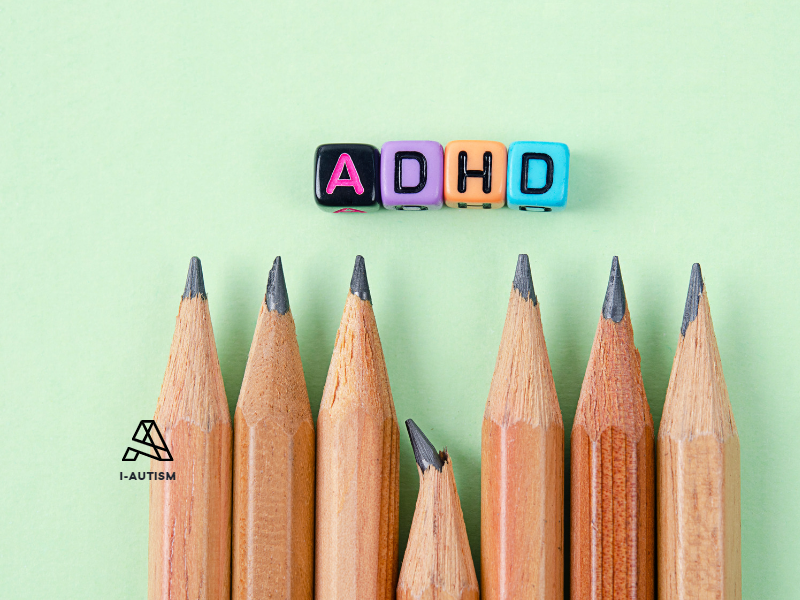Sensory overload in ADHD? This a common experience among individuals with attention deficit hyperactivity disorder (ADHD), impacting their ability to process and regulate sensory information effectively. In this article, we will explore sensory overload in the context of ADHD, understand its symptoms, and discuss practical management strategies to help individuals navigate this sensory challenge.
Understanding Sensory Overload in ADHD
Definition
Sensory overload in ADHD refers to the overwhelming and excessive stimulation of the sensory system, resulting in difficulties in filtering and processing sensory information. Individuals with ADHD may have heightened sensory sensitivities or difficulties with sensory regulation, leading to an increased vulnerability to sensory overload.
Symptoms of ADHD Sensory Overload
Sensory overload can manifest in various ways in individuals with ADHD. Some common symptoms include:
- Hyperactivity: Heightened sensory input may trigger increased restlessness, fidgeting, or difficulty staying still.
- Sensory Sensitivities: Individuals with ADHD may be more reactive to sensory stimuli, such as loud noises, bright lights, crowded spaces, or certain textures.
- Impaired Concentration: Sensory overload can significantly impact attention and focus, making it challenging to concentrate on tasks or filter out irrelevant sensory information.
- Emotional Dysregulation: Sensory overload can contribute to emotional dysregulation, leading to increased irritability, frustration, or even meltdowns.
- Disrupted Sleep: Individuals with ADHD may be more susceptible to disturbances in sleep due to sensory sensitivities or difficulties in sensory processing, further exacerbating the impact of sensory overload.
According to research, sensory overload can be a common experience for individuals with ADHD. Here is a checklist of signs based on current research:
- Difficulty focusing or concentrating in noisy or busy environments.
- Easily distracted by sensory stimuli such as bright lights or loud noises.
- Overwhelmed by sensory input, leading to feelings of stress or anxiety.
- Difficulty filtering out irrelevant sensory information, leading to sensory overload.
- Hypersensitivity to sensory stimuli, such as touch, sound, or smell.
- Difficulty regulating emotional responses to sensory input, leading to mood swings or irritability.
- Avoidance of sensory-rich environments, such as crowded or noisy spaces.
- Difficulty with transitions between sensory environments, such as moving from a quiet space to a busy one.
- Impulsivity or hyperactivity in response to sensory input, such as fidgeting or restlessness.
Research has shown that individuals with ADHD may have a lower threshold for sensory stimuli, making them more susceptible to sensory overload [Link]. Additionally, sensory overload can exacerbate the symptoms of ADHD, such as impulsivity, hyperactivity, and distractibility.
Management Strategies
Effectively managing sensory overload in ADHD can significantly improve an individual’s well-being and daily functioning. Here are some practical strategies to consider:
1. Sensory-Friendly Environment
Creating a sensory-friendly environment can help reduce the impact of sensory overload. Consider the following:
- Noise Reduction: Use earplugs, noise-cancelling headphones, or white noise machines to minimize auditory distractions.
- Lighting Control: Adjust lighting levels by using curtains, dimmers, or natural light to create a calmer environment.
- Organization and Minimization: Keep the physical space organized, clutter-free, and visually soothing to minimize distractions.
- Sensory Break Areas: Designate specific areas where individuals can retreat to for sensory breaks, equipped with calming sensory tools like weighted blankets or stress balls.
2. Sensory Diet and Regulation Techniques
Incorporating sensory diet activities and regulation techniques can help individuals with ADHD manage sensory input effectively. Consider the following strategies:
- Deep Pressure Activities: Engage in activities that provide deep pressure to the body, such as using weighted blankets, hugging a pillow, or engaging in physical exercise.
- Proprioceptive Input: Include activities that involve joint compression and muscle resistance, such as yoga, trampoline jumping, or carrying heavy objects.
- Sensory Breaks: Schedule regular sensory breaks throughout the day to engage in calming activities, such as deep breathing exercises, listening to soothing music, or engaging in preferred sensory activities.
3. Time Management and Structure
Establishing routines and effective time management strategies can support individuals with ADHD in managing sensory overload. Consider the following:
- Break Tasks into Manageable Chunks: Divide tasks into smaller, achievable parts to avoid feeling overwhelmed by sensory input.
- Use Visual Timers and Reminders: Visual timers, schedules, and reminders can provide structure and help individuals stay organized and on track.
- Prioritize Self-Care: Encourage regular breaks, healthy eating, exercise, and sufficient sleep to support overall well-being and sensory regulation.
4. Sensory-Mindfulness Techniques
Practicing sensory-mindfulness techniques can enhance self-awareness and provide individuals with tools to manage sensory overload effectively. Consider the following strategies:
- Mindful Breathing: Encourage deep breathing exercises and mindfulness meditation to promote relaxation and regulate sensory input.
- Grounding Techniques: Engage in grounding exercises that focus on sensory experiences, such as feeling textures, listening to specific sounds, or noticing scents in the environment.
- Body Scans: Conduct body scans to bring attention to different body parts, noting any areas of tension or discomfort and actively working to release tension.
5. Collaborate with Professionals
Seeking guidance from professionals experienced in sensory processing or ADHD can provide valuable support. Occupational therapists, psychologists, or ADHD specialists can offer individualized strategies and interventions to address specific sensory challenges.
Sensory overload in individuals with ADHD can significantly impact their daily functioning, attention, and emotional well-being. By understanding the symptoms and implementing practical management strategies, individuals with ADHD can better navigate sensory overload and improve their overall quality of life. Creating a sensory-friendly environment, incorporating sensory diet activities, practicing time management, and utilizing sensory-mindfulness techniques can all contribute to effective sensory regulation. Remember, collaboration with professionals can provide additional guidance and support tailored to individual needs. By adopting these strategies, individuals with ADHD can enhance their ability to manage sensory overload and thrive.



